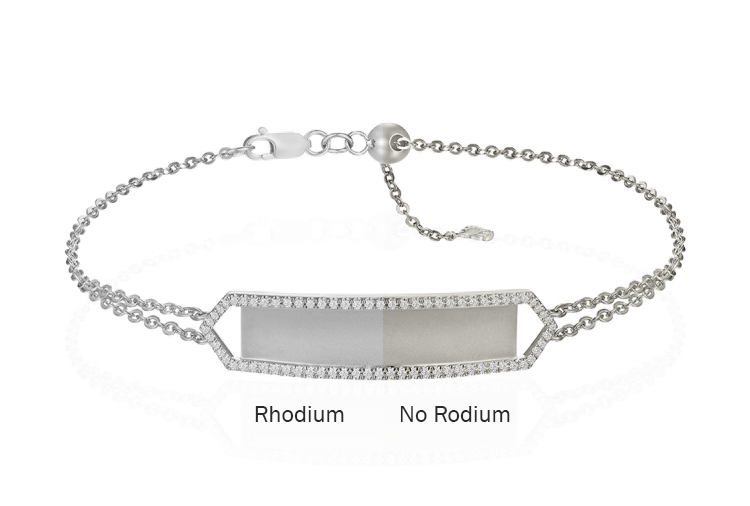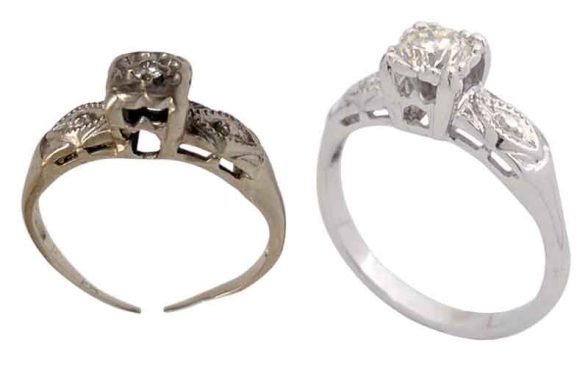
White gold jewelry is often rhodium plated for several reasons:
- Color Enhancement: Natural white gold has a grayish or slightly yellowish tint due to its composition, which typically includes a blend of gold, other metals like nickel or palladium, and sometimes small amounts of copper or silver. Rhodium plating is used to enhance the jewelry’s appearance by givin
 g it a bright white and shiny finish that resembles platinum or pure white gold. This is particularly desirable for engagement rings and wedding bands, as it complements the brilliance of diamonds.
g it a bright white and shiny finish that resembles platinum or pure white gold. This is particularly desirable for engagement rings and wedding bands, as it complements the brilliance of diamonds. - Scratch Resistance: Rhodium is a very hard and durable metal, making it highly resistant to scratches and wear. By rhodium plating white gold jewelry, it creates a protective layer that helps prevent scratches and maintains the jewelry’s pristine appearance over time.
- Allergy Protection: Some people are sensitive or allergic to certain metals used in white gold alloys, such as nickel. Rhodium plating acts as a barrier between the skin and the metal, reducing the likelihood of allergic reactions or skin irritations.
- Tarnish Resistance: Rhodium is highly resistant to tarnishing and corrosion. By rhodium plating white gold, it provides a layer of protection that prevents the underlying white gold from tarnishing or discoloring due to exposure to air and moisture.
- Maintenance and Longevity: Rhodium plating can extend the life and beauty of white gold jewelry. It can be re-plated periodically to maintain the desired appearance, especially for heavily worn items like engagement rings, which are subjected to daily wear and tear.
It’s important to note that rhodium plating is not permanent, and over time, the plating can wear off, revealing the underlying white gold. Depending on factors like the thickness of the plating and the amount of wear the jewelry receives, rhodium-plated jewelry may need re-plating every few years to maintain its appearance.

